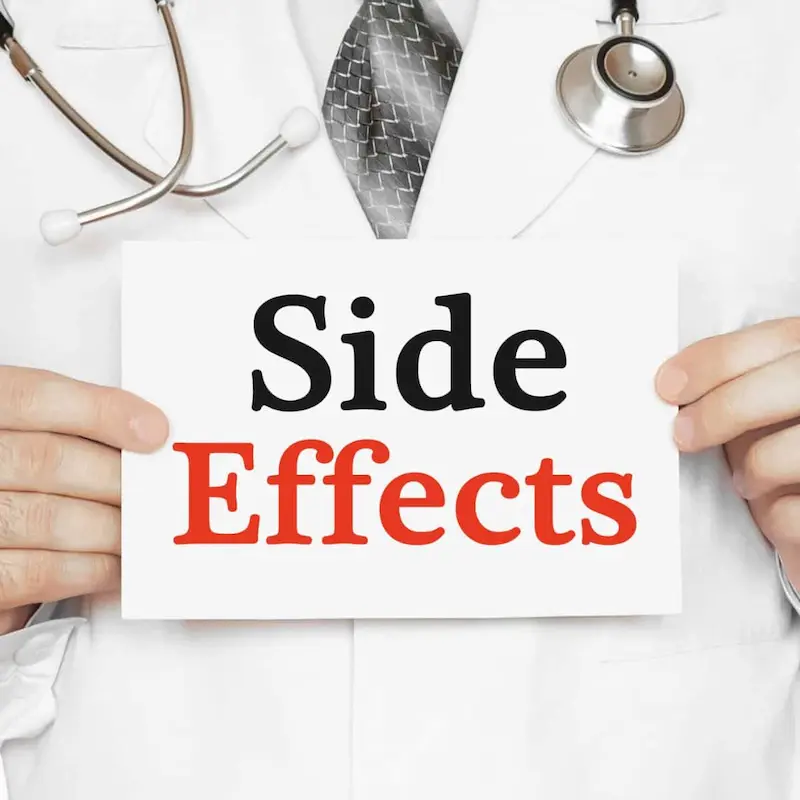Anabolic steroids vs corticosteroids are both classes of compounds known as steroids, yet they are distinct in function and application. Anabolic steroids, which are synthetic derivatives of testosterone, are known primarily for their role in promoting the growth of muscle and enhancing athletic performance. Corticosteroids, on the other hand, are involved in a wide range of physiological processes, including the immune response and the regulation of inflammation, carbohydrate metabolism, protein catabolism, blood electrolyte levels, and behavior.
While they share a common nomenclature, the difference between anabolic steroids and corticosteroids lies in their target tissues and effects. Anabolic steroids are often associated with their use in sports to increase muscle mass and strength, which is a major reason for their tight regulation and legal constraints. Unlike anabolic steroids, corticosteroids are prescribed by doctors for their potent anti-inflammatory properties and as treatment for a variety of medical conditions, such as asthma, rheumatoid arthritis, and lupus. The administration methods for these steroids can vary widely, from oral pills to injections to topical gels, depending on the intended use and desired effect.
Quick Summary
- Anabolic and corticosteroids are distinct classes of steroids with different effects.
- Anabolic steroids are used for muscle growth, whereas corticosteroids regulate inflammation.
- Corticosteroids have broad medical applications, while anabolic steroids are tightly regulated.
Classification and Chemistry of Steroids

Steroids are organic compounds with distinct molecular structures containing four rings of carbon atoms. The significant classes of steroids, anabolic steroids, and corticosteroids, vary in function and structure. They play crucial roles in biological processes related to sex hormones and stress response.
Anabolic Steroids
Anabolic steroids are synthetic substances similar to the male sex hormone testosterone. They promote muscle growth and enhance athletic performance. Chemically, they are known as anabolic-androgenic steroids (AAS), incorporating both tissue-building anabolic properties and masculinizing androgenic effects. Testosterone, the natural analog of AAS, serves as a key androgen that is synthesized chiefly in the testes, and to a lesser extent in the ovaries, and by the adrenal glands.
- Chemical Characteristics:
- Structure: Modified testosterone structure with varied alkyl groups at the 17th carbon position.
- Properties: Increased anabolic effects compared to testosterone.
Corticosteroids
Corticosteroids are hormones produced by the adrenal glands located atop the kidneys. They are involved in a wide array of physiological processes including immune system response, regulation of inflammation, metabolism, and stress response. Corticosteroids are primarily of two types: glucocorticoids, such as cortisol, which are involved in carbohydrate metabolism and anti-inflammatory actions, and mineralocorticoids, which regulate salt and water balances in the body.
- Chemical Characteristics:
- Structure: Similar to cortisol with modifications to alter potency and duration of action.
- Properties: Immunosuppressive and anti-inflammatory, influencing glucose metabolism.
References
Therapeutic Uses and Medical Prescriptions

Anabolic steroids and corticosteroids serve distinct roles in medicine, with prescriptive practices tailored to leverage their unique properties. Anabolic steroids are primarily used to treat hormonal issues in men, whereas corticosteroids are utilized to manage a range of inflammatory and autoimmune conditions.
Medical Indications for Anabolic Steroids
Anabolic steroids, synthetic versions of the male sex hormone testosterone, are prescribed to address conditions like male hypogonadism, where the body does not produce enough testosterone. They are also used in the treatment of certain types of anemia and breast cancer, with their ability to promote growth and regeneration of tissues.
- Male Hypogonadism: Prescription of anabolic steroids restores adequate levels of testosterone, aiding in the development of male characteristics and overall well-being.
- Anemia: These steroids stimulate bone marrow to increase red blood cell production.
- Breast Cancer: Anabolic steroids can be part of hormone therapy for some forms of breast cancer.
Corticosteroids in Disease Management
Corticosteroids are potent anti-inflammatory hormones that can be prescribed for a diversity of conditions, such as asthma, arthritis, lupus, and multiple sclerosis. They work by diminishing the immune system’s response, thereby reducing inflammation throughout the body.
- Asthma and Allergies: Corticosteroids alleviate airway inflammation, making breathing easier for patients.
- Arthritis and Lupus: These medications reduce joint inflammation and pain associated with autoimmune diseases.
- Skin Disorders: Prescriptions for conditions like eczema tackle inflammation and suppress the immune reaction in the skin.
- Multiple Sclerosis (MS): Corticosteroids aid in managing MS exacerbations by decreasing the immune system’s attack on nerve cells.
For diseases like osteoporosis, diabetes, and certain types of cancer, such as leukemia, corticosteroids must be carefully managed due to their effects on bone density, blood sugar levels, and the immune system.
Note on Prescription: The prescribing of both anabolic steroids and corticosteroids must be carefully managed, considering potential side effects and the contraindications with other medications the patient may be taking.
References
- Hormone Health Network. “Anabolic Steroids.” https://www.hormone.org/your-health-and-hormones/glands-and-hormones-a-to-z/hormones/anabolic-steroids
- Mayo Clinic. “Prednisone and other corticosteroids.” https://www.mayoclinic.org/steroids/art-20045692
Methods of Administration

Steroids can be administered into the body through various methods, each with its specific protocols and applications. The choice of administration technique depends on the type of steroid, desired effects, and medical recommendations.
Injectable Steroids
Injectables: Anabolic steroids such as nandrolone phenpropionate and corticosteroids are often administered as an injection. These injections can be delivered intramuscularly, directly into muscle tissue, which then disperses the steroid into the bloodstream over time.
- Intramuscular: Direct into muscle
- Disperse Rate: Variable based on compound
Oral, Patches, and Creams
Oral Delivery: Steroids like methyltestosterone, fluoxymesterone, oxandrolone, and oxymetholone can be taken orally. They are absorbed through the gastrointestinal tract and must pass through the liver, which can cause a strain on the organ.
- Gastrointestinal Absorption
- Liver Strain
Patches and Creams: Some anabolic steroids and many corticosteroids can be given via patches or topical gels applied to the skin. These methods allow the steroid to be absorbed into the bloodstream through the skin.
- Skin Absorption
- Steady Release
Side Effects and Health Risks

Both anabolic steroids and corticosteroids can cause a range of side effects and pose significant health risks when not used as prescribed. Misuse of these substances can lead to serious physical and psychological effects, as well as long-term health consequences.
Physical Side Effects
Anabolic Steroids:
- Weight Gain: Common with fluid retention and increased appetite.
- Muscle Weakness: Paradoxical effect can occur with prolonged use.
- Hypertension: Elevated blood pressure is a significant risk.
- Acne and Hirsutism: Greasy skin and excessive hair growth are often reported.
- Gynecomastia: Development of breast tissue in men.
- Liver Damage: Oral anabolic steroids are linked to liver toxicity.
- Stunted Growth: Adolescents risk premature skeletal maturation and halted growth.
- Male-Pattern Baldness: Can accelerate hair loss in predisposed individuals.
Corticosteroids:
- Blood Pressure Issues: Both high blood pressure and low blood pressure can manifest.
- Blood Sugar Increase: High risk of hyperglycemia, especially in diabetics.
- Cataracts: Long-term use is associated with eye issues.
- Thin Skin: Skin becomes fragile and bruises easily.
Psychological Effects
Anabolic Steroids:
- Mood Swings: Heightened aggression and irritability are possible.
- Confidence to Paranoia Shift: Overconfidence can shift to extreme suspicion or paranoia.
Corticosteroids:
- Mood Changes: Can range from euphoria to depression.
- Fatigue: Prolonged use may lead to mental and physical fatigue.
Long-Term Health Consequences
Anabolic Steroids:
- Heart Disease: Increased cholesterol levels lead to a higher risk of stroke and heart attack.
- Kidney Failure: The stress on kidneys can cause long-term damage.
Corticosteroids:
- Infections: Immune system suppression may lead to increased risk of infections.
- Growth Hormone Suppression: Particularly in children, which can affect long-term growth.
References
Usage Patterns and Legal Considerations
Anabolic and corticosteroids vary significantly in usage patterns, with anabolic steroids often associated with muscle growth in athletes and bodybuilders, while corticosteroids are medically prescribed for a variety of conditions, including autoimmune disorders. Legal considerations are complex, reflecting the divergent reasons for steroid use.
Sporting and Bodybuilding Context
Anabolic Steroids: In sports and bodybuilding, anabolic steroids are primarily used for enhancing muscle mass and improving performance. Athletes and bodybuilders may engage in “cycling,” the practice of taking steroids in cycles, followed by periods of discontinued use. This is believed to maximize muscle growth and minimize unwanted side effects.
- Testosterone Supplementation: Often used to stimulate muscle growth and increase strength.
- Muscle Tissue: Targets skeletal muscle to promote rapid muscle growth.
- Abuse: Potential for misuse, leading to “roid rage,” depression, infertility, and hypogonadism.
- Androgen Receptors: Stimulates these receptors, affecting sex drive and potentially causing addiction.
Corticosteroids: Prescription corticosteroids, such as prednisone and hydrocortisone, are used in medicine for their anti-inflammatory and immunosuppressive properties.
- Autoimmune Disorders: Often prescribed for conditions like asthma and arthritis.
- Gastrointestinal Issues and Tumors: Can be used to manage symptoms and complications.
- Side Effects: Include potential endocrine disruptions, leading to conditions like osteoporosis or diabetes.
Regulation and Legal Status
Anabolic Steroids:
- Legal Status: Classified as controlled substances in many jurisdictions due to potential for abuse and health risks.
- Regulations: Varies by country; illegal to use without prescription in the U.S. and many other nations.
- Enforcement: Governing bodies in sports have strict anti-doping regulations.
Corticosteroids:
- Classification: Considered legal prescription medications when used under a doctor’s supervision.
- Regulations: Typically regulated as prescription drugs, with less severe legal consequences than anabolic steroids.
- Usage: Legal when prescribed for conditions such as delayed puberty, low testosterone due to hypogonadism, or estrogen-related disorders.
References
Frequently Asked Questions

This section explores some of the most common inquiries regarding the distinctions between anabolic and corticosteroids, their effects, side effects, and typical medical uses.
What are the primary differences in the effects of anabolic steroids versus corticosteroids?
Anabolic steroids primarily promote muscle growth and increase strength by mimicking testosterone. Corticosteroids, on the other hand, are used to reduce inflammation by mimicking cortisol, a hormone that plays a role in the body’s stress response.
Can corticosteroids contribute to muscle gain like anabolic steroids?
No, corticosteroids do not contribute to muscle gain like anabolic steroids. Instead, they can lead to muscle weakness or wasting with long-term use due to their catabolic effects on tissue.
Are there distinct side effects associated with anabolic steroids compared to corticosteroids?
Yes, anabolic steroids and corticosteroids have different side effect profiles. Anabolic steroids may cause liver damage, hormonal imbalances, heart problems, and aggression. Corticosteroids can lead to increased susceptibility to infection, osteoporosis, and changes in blood glucose levels, among other side effects.
In what medical scenarios are steroids typically prescribed?
Anabolic steroids may be prescribed to treat delayed puberty, muscle loss from certain diseases, or hormonal issues like low testosterone. Corticosteroids are prescribed for a wide variety of conditions, such as asthma, autoimmune diseases, and inflammatory disorders.
How do anabolic steroids enhance muscle growth and physical performance?
Anabolic steroids enhance muscle growth and physical performance by increasing protein synthesis within cells, which results in the buildup of cellular tissue, particularly in muscles. They also decrease recovery time by attenuating muscle damage and reducing inflammation.
How do the uses and effects of prednisone differ from those of methylprednisolone?
Prednisone and methylprednisolone are both corticosteroids, but they differ in potency, duration of effect, and the conditions they are used to treat. Prednisone is less potent and often used for chronic conditions, while methylprednisolone is more potent and used for acute flare-ups.
References
- “Anabolic Steroid Abuse”, National Institute on Drug Abuse, https://www.drugabuse.gov/publications/drugfacts/anabolic-steroids
- “Corticosteroids”, Mayo Clinic, https://www.mayoclinic.org/steroids/art-20045692
Dr. Grant Fourie, a specialist in male hormones, is based in Cape Town, South Africa. He provides comprehensive treatments for conditions related to low testosterone, such as erectile dysfunction, fatigue, and mood changes. His methods include hormone replacement therapy and other modern treatment options.
Contact me via email or phone to book personal appointment in my clinic: The Village Square, Cape Town - South Africa



